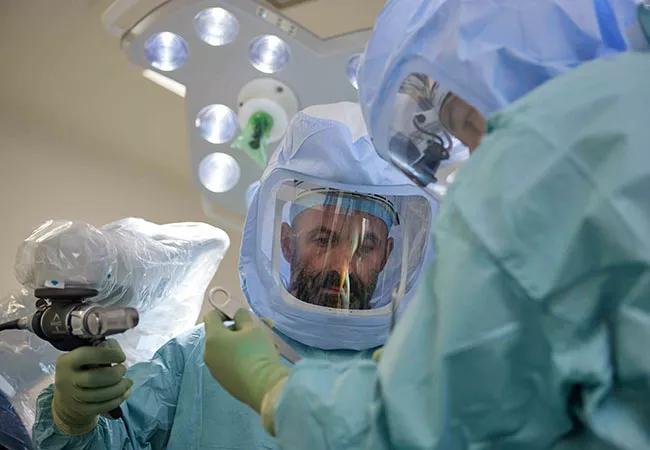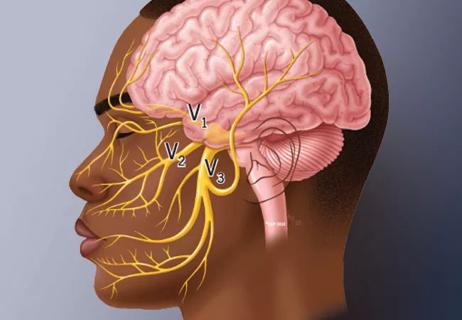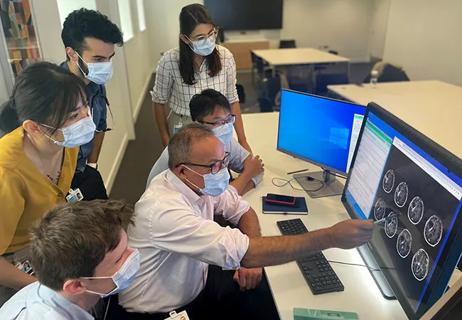Patient discharged within 24 hours, resumes golf and tennis in three weeks

An 82-year-old patient with severe osteoarthritis of the hip resumed playing golf and tennis less than three weeks after having hip replacement surgery at Cleveland Clinic London. While rehabilitation from conventional hip replacement usually takes six to eight weeks, anterior hip replacement surgery provides a quicker recovery that is typically less painful, with almost zero risk of hip dislocation after surgery.
Cleveland Clinic is a non-profit academic medical center. Advertising on our site helps support our mission. We do not endorse non-Cleveland Clinic products or services. Policy
The anterior approach, now common at Cleveland Clinic and other U.S. medical centers, is less common in the U.K. According to consultant orthopaedic surgeon Panagiotis Gikas, MBBS, MD, PhD, of Cleveland Clinic London, most hip replacement surgeries in the U.K. are done with either a posterior or lateral approach.
“Those conventional approaches are good, but they require surgeons to gain access to the hip by cutting through muscles around the hip joint,” he says. “After the operation, the muscles must be reattached. Rehabilitation can be slow after these procedures because the muscles need to heal. As a result, there can be more postoperative pain, not to mention long-term functional changes like limping if the muscles don’t heal correctly.”
The anterior approach is a minimally invasive, muscle-sparing technique. In addition to requiring only a small incision (leaving only a small scar), the surgical method causes minimal disruption to the hip muscles and other soft tissues.
“A lot of operations are misleadingly labelled ‘minimally invasive,’ referencing simply the size of the superficial scar,” says Mr Gikas. “The anterior approach is truly minimally invasive, not just because of the small scar, but also because it causes minimal damage to all the soft tissues and muscles around the hip joint.”
Instead of disrupting muscles to access the hip from the back or the side, surgeons access it from the front without damaging any muscle fibers. What actually moves the hip are the muscles around it, explains Mr Gikas. So, the more muscles are preserved, the faster a patient’s rehabilitation and the better their functional outcome.
Anecdotally, nurses report that patients are able to get in and out of bed easier after anterior surgery (compared to other hip replacement surgeries), require less pain medication and are more mobile.
Muscle preservation also means nearly no risk of hip dislocation after surgery, adds Mr Gikas. That allows patients to avoid many of the dislocation-prevention requirements common after posterior or lateral hip replacement surgery, such as using an elevated toilet seat, not crossing their legs and not sleeping on the side of the replaced hip.
The patient in this case was released from hospital 24 hours after the procedure. He was able to walk without crutches. Patients after anterior hip replacement surgery tend to require crutches, walkers and other assistive devices far less than patients after conventional surgery.
According to Mr Gikas, patients having anterior surgery have the shortest average hospital stay of all patients having hip replacement. Almost all of Mr Gikas’ anterior hip replacement patients leave hospital after one night, and a growing number are leaving hospital the day of their operation.
“I consistently get very positive feedback from physiotherapists looking after my patients with anterior approach hip replacement,” he says. “They are amazed at the speed of recovery and the better muscle control that these patients have postoperatively.”
A little more than two weeks after surgery, the patient in this case drove himself back to Cleveland Clinic London for a follow-up appointment with Mr Gikas.
“This patient was quite active and fit, so hip arthritis had significantly reduced his quality of life before surgery,” says Mr Gikas. “Anterior hip replacement not only quickly eradicated his pain, it restored his mobility and independence, allowing him to resume his active lifestyle. He has already begun swimming again and is back at the golf course and tennis court.”
There are no specific contraindications for anterior hip replacement, although a small number of patients with extreme hip dysplasia may be served better by one of the conventional approaches. Surgeon experience with the anterior technique is important.
“Successful outcomes of anterior hip replacement surgery, as with the patient in this case, are not simply due to a surgeon’s experience or the choice of a surgical technique,” says Mr Gikas. “They are due to the expertise of the entire surgical team — especially like we have here at Cleveland Clinic London, a team centered on the patient and prepared to deliver the highest quality of care.”
Above photo: Mr Gikas performs joint replacement surgery at Cleveland Clinic London.

Case report of a young man with severe traumatic brain injury and cognitive deficits

Special glasses allowed surgeon to see 3D models and anatomic data superimposed on surgical field

First private hospital in the U.K. to receive HIMSS EMRAM Stage 6 accreditation

A review of takeaways from the recent U.K. national guidelines

Patient’s unexplained low blood glucose levels in the absence of diabetes spark quest for answers

New technology aids a Cleveland Clinic London patient with a complex arrhythmia

Leadership role offers a way to improve the entire visit

Medical students will complete five weeks of clinical training